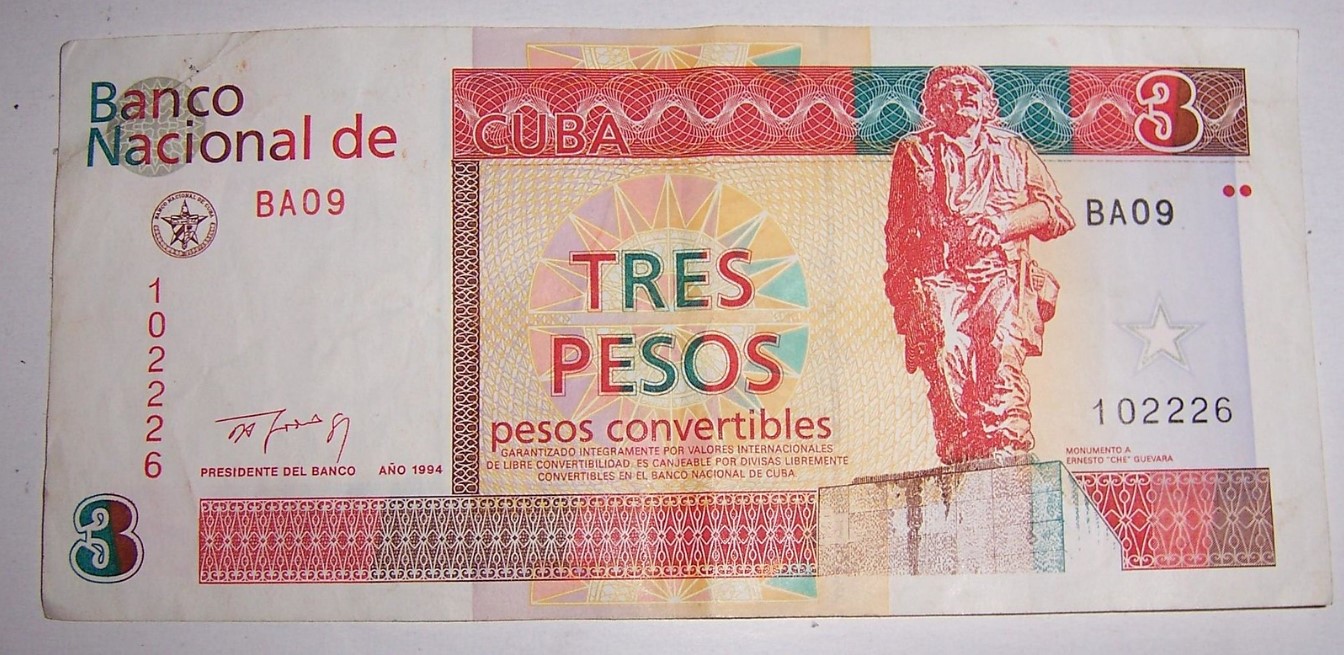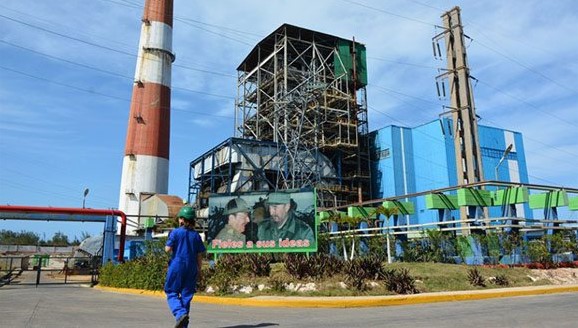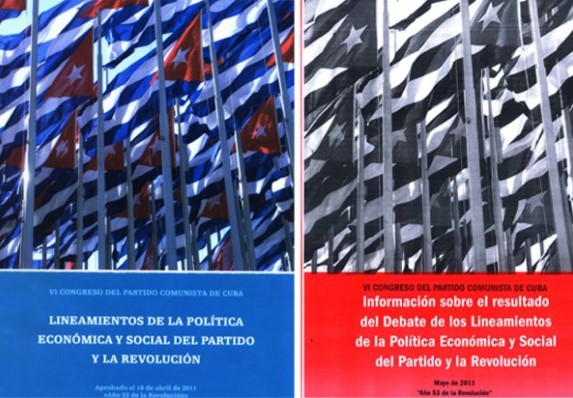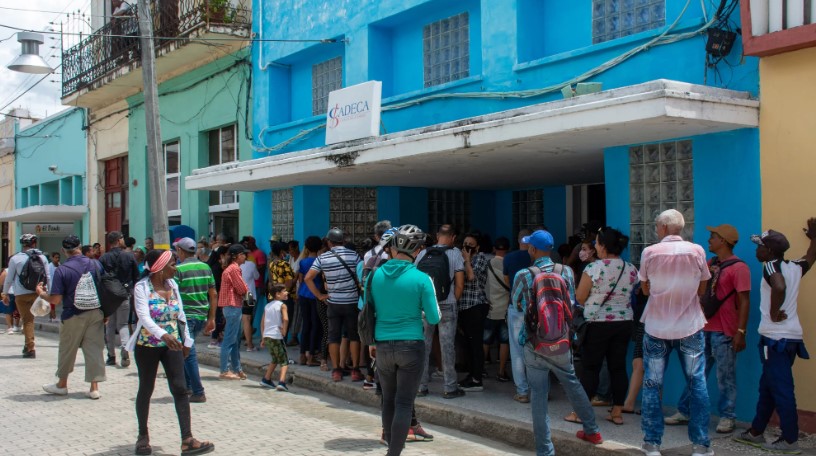At the end of July, a series of economic measures were announced in Cuba, amongst them opening up the retail sector to foreign investment and the opening of a new official currency exchange rate. In order to comprehend the meaning of these measures and their possible impact and consequences, we need to understand the background to the very dire economic situation in the island.
The package of 75 economic measures announced allows for the participation of foreign investment in the retail and wholesale domestic trade for the first time since the abolition of capitalism in the 1960s. In the case of wholesale trade, the new rules will allow both joint ventures with Cuban companies and wholly owned foreign companies. In retail trade, foreign investment will take place through joint ventures with local businesses, both private and state-owned. Some Cuban private sector companies will be allowed to engage directly in foreign trade “under the supervision of the Ministry of Foreign Commerce”, Mincex.
This is a measure that goes in the direction of making further concessions both to private Cuban capital as well as foreign capital, which up to now was excluded from the retail sector. It also represents a relative weakening of the state monopoly of foreign trade.
 The recent economic measures are an attempt to address the problems created by the January 2021 “Ordenamiento Monetario”, which merged Cuba's two separate currencies / Image: mike flickr
The recent economic measures are an attempt to address the problems created by the January 2021 “Ordenamiento Monetario”, which merged Cuba's two separate currencies / Image: mike flickr
The other main plank of the announced economic measures was the creation of a new foreign exchange rate, through which the state would purchase dollars from the public at a rate much higher than the official rate. Initially, the state would buy at 120 pesos per dollar, when the official rate is 24 pesos. The expectation is that, by offering a rate that is close to that of the black market exchange, the state will be able to recover dollars that are circulating in the informal sector, coming both from remittances and tourists. For now, the state will only purchase dollars, not sell them.
Both measures represent an attempt to address the problems created by the January 2021 “Ordenamiento Monetario” (“Currency Reorganisation”). At that time, Cuba’s two separate currencies and two exchange rates (one for businesses, one for individuals) were collapsed into one currency and one exchange rate through a sharp devaluation. The business exchange rate of 1 CUP (Cuban peso) per 1 CUC (convertible peso - equivalent to 1 USD) was brought down into line with the exchange rate for individuals of 24 CUP per 1 CUC. The convertible peso (CUC) was abolished and now the US dollar was worth 24 Cuban pesos.
To balance out this sharp devaluation, wages and pensions were raised significantly. One of the problems was that this increased the money supply without at the same time increasing the supply of goods. This led inevitably to inflation, speculation, profiteering, black markets and the devaluation of the currency. According to official government figures, inflation was 73 percent in 2021 and is forecasted at 28 percent in 2022. These figures reflect the regulated prices of goods. The problem is that many of those are subject to severe scarcity, pushing people to purchase basic products in the informal market, where prices went up by between 500 and 700 percent.
At the time of the Currency Reorganisation, in an attempt to collect much-needed foreign currency, the government established shops selling imported goods in MLC (Freely Convertible Currency). MLC was created as a virtual currency, used through cards in which people could deposit dollars at a rate of 1 USD = 1 MLC. The idea was that those who receive dollars in remittances could then spend them to buy products in state-run shops. Thus, the state would recover part of the dollars that circulate in the informal sector of the economy and use them to import basic goods, which it would then sell at subsidised prices in pesos. That did not really work as expected. Instead of only certain higher end products being sold at MLC shops, which only a section of the population can access, what happened was that all available products ended up being sold at these shops, while normal peso shops were left with bare shelves. This contributed to further worsening the social conditions of the poorer layers, who have no access to dollars.
A dangerous situation for the revolution
None of this can be understood without looking into the situation of the Cuban economy as a whole. Ever since capitalism was abolished in Cuba in the 1960s after the revolution, the island has been subject to a relentless campaign of imperialist aggression by the United States, a key component of which is the economic blockade. For nearly three decades, the close and favourable economic association between Cuba and the USSR allowed the island to survive. The collapse of Stalinism in the period between 1989-91 put an end to that, provoking a massive economic crisis, known as the Special Period. The revolution survived, but was eventually forced to make concessions to capitalism, particularly in the form of foreign investment in the tourist sector and the partial dollarisation of the economy. The rise of the Bolivarian Revolution in Venezuela the 2000s gave Cuba another respite through a series of favourable economic agreements. The deep economic crisis in Venezuela, starting in 2014, again put the Cuban Revolution in a very dangerous situation.
As if the very unequal terms of trade Cuba gets in the world capitalist economy and the constant US blockade were not enough, then, in 2017 Trump came to power. He proceeded to tighten the noose around the Cuban economy even further, reversing all the concessions made by Obama and introducing 243 additional measures of economic blockade. These had a severe impact on the Cuban economy, limiting tourism and remittances, two of the country’s main sources of hard currency income.
Then, in 2020, the Covid Cuba has faced a series of serious problems in the generation of electricity, leading to widespread black outs / Image: John Vila Acosta ACN pandemic struck, bringing tourism almost to a complete halt and dealing a severe blow to the country’s economy. In 2019 Cuba had received 4.1 million tourists, the figure collapsed to just over 1 million in 2020 and further down to 570,000 in 2021. In 2019, tourism had brought in US$3bn. Now, when it seemed that the world was opening up again to tourism, the closure of the airspace to Russian airlines as a reprisal for the war in Ukraine has partially dried up one of the main source markets for Cuban tourism.
Cuba has faced a series of serious problems in the generation of electricity, leading to widespread black outs / Image: John Vila Acosta ACN pandemic struck, bringing tourism almost to a complete halt and dealing a severe blow to the country’s economy. In 2019 Cuba had received 4.1 million tourists, the figure collapsed to just over 1 million in 2020 and further down to 570,000 in 2021. In 2019, tourism had brought in US$3bn. Now, when it seemed that the world was opening up again to tourism, the closure of the airspace to Russian airlines as a reprisal for the war in Ukraine has partially dried up one of the main source markets for Cuban tourism.
This combination of factors led to sharp economic contraction, of 10 percent in 2020, as well as a very high fiscal deficit of 17 percent.
The recent economic measures, both the ones announced in July/August this year and the Currency Reorganisation of January 2021 should be seen as responses to these shocks as well as to more long-term problems facing the Cuban economy and were taken at a time when the room for manoeuvre had been sharply reduced.
The aim is to attract foreign investment, in the case of these latest measures towards the retail sector, while at the same time recovering some of the dollars already circulating, so they can be used in the world market. As has happened before, these measures are welcomed by capitalists and pro-capitalist economists and commentators, but they complain that they do not go far enough. Omar Everleny, who was until 2016 one of the leading lights at the Centre for the Study of the Cuban Economy in Havana, but has now moved to Colombia said: “It is a step in the right direction, but far too little and too late.”
At the same time, the measures taken do not address the key question of increasing production, while increasing the amount of money in circulation, in pesos. Therefore they are likely to have an inflationary effect as well as lead to a further devaluation of the currency.
Additionally, Cuba has faced a series of serious problems in the generation of electricity, leading to widespread black outs, affecting not only the provinces but also the capital Havana. A number of accidents, including the recent massive fire at the giant fuel tankers in Matanzas, have aggravated the situation, but at root the problem is one of lack of maintenance and repairs of the electricity generating plants as well as the sharp rise in price of fuel in the world market.
The electricity blackouts have highlighted a serious dilemma facing the Cuban government. There has been a lot of criticism of the fact that a large share of government spending goes on investments directly or indirectly related to the tourist industry, even at a time when there was severe scarcity and low occupancy of hotels. Why was that money not used to import food and other basic products? However, the situation is not so simple, because without the necessary investment, the tourist industry will not be able to attract tourists as it reopens. Another, even more serious dilemma is also posed. Should the scarce dollars generated in Cuba be used to buy food or to purchase the necessary parts to repair and renew the electricity generating plans, the overwhelming majority of which have already exceeded their working life?
All of these factors (tightening of blockade, Covid pandemic, scarcity, blackouts) are at the root of the protests in Cuba on July 11, 2021, and several local protests over electricity blackouts in recent months. Last year the protests were capitalised politically by the counter-revolution and dominated by reactionary slogans, but certainly the fact that many of those who came out were from working class and poor neighbourhoods can be explained only by growing discontent at the economic situation.
The combination of scarcity and long queues to access basic goods with electricity blackouts have created the feeling amongst a growing section of the population that there is no way out. The optimism created by Obama’s partial thaw has evaporated. Many have decided to leave and a large proportion of those are young. According to US figures, since October 2021, 180,000 Cubans have illegally entered the US through Mexico and another 8,000 have done so In Julyby boat. This is an astonishing figure, considering that the island’s population is just over 11 million.
What is to be done?
The constraints facing the Cuban economy impose very difficult decisions and choices. Within these limits, what can be done? This question has led to a series of discussions going back over 10 years, when the Communist Party Congress approved the Economic Guidelines (Lineamientos). They represented an attempt to solve the very severe problems facing the Cuban economy by making controlled concessions to private capital, national and foreign. Clearly, a section of the Cuban leadership was and is startled by the “Chinese model”, or, as sometimes is preferred in Cuba, the “Vietnamese model”. In both cases, they reason, the restoration of capitalism has led to economic growth, a reduction in poverty, and still the ‘Communist’ Party is in power. One can see why such a model would be attractive for a section of the bureaucracy.
 The Economic Guidelines (Lineamientos) introduced 10 years ago were an attempt to solve the very severe problems facing the Cuban economy by making controlled concessions to private capital / Image: Partido Comunista de CubaOf course, the idea that China is a model to follow, ignores the consequences of the restoration of capitalism: the enormous exploitation of labour by foreign multinationals, the enormous growth in social inequality, the destruction of the old systems of social welfare, etc. Additionally, China and Vietnam could offer a large pool of cheap labour to the world market, which made them attractive as destinations for foreign investment. In comparison, Cuba is a very small Caribbean island with far fewer foreign investment opportunities.
The Economic Guidelines (Lineamientos) introduced 10 years ago were an attempt to solve the very severe problems facing the Cuban economy by making controlled concessions to private capital / Image: Partido Comunista de CubaOf course, the idea that China is a model to follow, ignores the consequences of the restoration of capitalism: the enormous exploitation of labour by foreign multinationals, the enormous growth in social inequality, the destruction of the old systems of social welfare, etc. Additionally, China and Vietnam could offer a large pool of cheap labour to the world market, which made them attractive as destinations for foreign investment. In comparison, Cuba is a very small Caribbean island with far fewer foreign investment opportunities.
Others do not necessarily agree that the destination is, like China, the restoration of capitalism under the control of a ruling elite, which goes from being bureaucrats managing the economy to becoming capitalist owners of the means of production. But nevertheless they argue enthusiastically that in order to “unleash the productive forces” it is necessary to make ever more concessions to capitalism. Abolishing universal benefits, in favour of targeted subsidies. Privatising large sections of the state-owned companies, because private management is “more effective”. Using the whip of the market to discipline state-owned businesses, through bonuses linked to performance and profits, and by shutting down loss-making state sector companies.
Regardless of the intention of those who propose these measures, whether they consciously want to restore capitalism or not, the inevitable logic of their implementation leads towards the strengthening of the process of capitalist accumulation in the private sector and the birth of a capitalist class, as well as the domination of foreign capital. There are already between 4-5,000 private companies in the country. Although most of them are small or even micro companies, employing very small amounts of waged labour, some of them are inevitably growing.
But, is there another alternative? It is obvious that certain concessions to private capital are necessary as a way to attempt to attract the much-needed capital investment. Many in Cuba use the example of the New Economic Policy (NEP introduced in the Soviet Union in 1922). But there are some very important differences between the policies being introduced in Cuba and the NEP.
First of all, the NEP was understood by Lenin and Trotsky as a necessary evil, as a temporary retreat fraught with dangers. Instead, in Cuba, these measures are promoted as the way forward to build sustainable socialism and a fair society.
In the Soviet Union, the introduction of the NEP was accompanied by a series of measures to strengthen the power of the working class and fight against bureaucracy and even there this was not enough to prevent the rise of the bureaucracy and the abolition of workers’ democracy. The process of bureaucratisation of the Russian revolution was based to a large extent on the petty bourgeois and capitalist forces unleashed by the NEP, in the cities and in the countryside.
Similarly powerful forces are being unleashed in Cuba; perhaps more powerful, as we are talking about a small island with limited resources, surrounded by world capitalism. But in Cuba this is presented as a positive process through which “a better country” is being built. Instead of a serious political discussion of these dangers, what we see is a complacent promoting of the virtues of the private sector or sometimes a clamp down of any criticism against the bureaucracy.
There is an alternative to this. The most important thing to understand is that the gains of the Cuban Revolution rest on the nationalised planned character of the economy, that is, on the abolition of capitalism. These gains still exist (in the fields of education, health care, housing, national sovereignty), though weakened by the blockade and the economic crisis, and should be defended. If capitalism is restored in Cuba, the island will be condemned to massive social inequality, subjugation to imperialism and a sharp deterioration of living standards. A capitalist Cuba would not look like capitalist Sweden, but more like capitalist Haití or capitalist Dominican Republic, or even like a capitalist colonial Puerto Rico.
Whatever concessions might be necessary to private capital, they need to be accompanied by genuine workers’ power. Bureaucracy inevitably leads to inefficiency, mismanagement and corruption. It plays a counter-revolutionary role by demoralising working people and fomenting cynicism, scepticism and apathy. Bureaucracy can only be combatted through workers’ democracy and control. In order to unleash the productive forces, the working class needs to feel that it is really in control, that it can take all the decisions.
There are plenty of bottlenecks in the Cuban economy which could be solved or alleviated by putting matters in the hands of the workers and producers themselves. That sometimes could be done through cooperatives, particularly in agriculture, though these are not without risks. National production could increase if the initiative of workers themselves was used to the full extent. But for that it is necessary that workers understand that they are in charge and that if sacrifices need to be made, that these are made proportionally by all. This means the elimination of all privileges of the bureaucracy, material and economic.
This would not solve all problems overnight, as Cuba would still remain at the mercy of the world market and subject to economic blockade by imperialism, but it would go some way towards improving national production.
For workers’ democracy and internationalism
Of course, bureaucracy also arises as a result of the isolation of the Cuban revolution. A proletarian internationalist policy is needed, both in order to mobilise the solidarity and support of the workers, peasants and youth of the world for the revolution and against imperialism, but also because, in the last instance, the fate of the Cuban Revolution will be settled on the arena of world class struggle.
A successful socialist revolution in a Latin American country (for instance Ecuador, Chile, Colombia, all of which have witnessed massive upsurges of workers, peasants and youth in the last few years), would provide a much welcome lifeline to the Cuban revolution. A glimpse of what would be possible was provided by the economic and political links with the Venezuelan revolution (even though that revolution was never completed).
A successful socialist revolution in the United States or an advanced capitalist country in Europe would have an even more powerful impact, allowing for the transfer of technology and capital goods at a much higher scale.
Is that far-fetched? Is it ruled out? The world capitalist system is in a period of deep senile crisis, which particularly since the economic crisis of 2008 has led to a series of mass movements, a process of political radicalisation and even revolutionary events in country after country, including in the United States itself. The Cuban Revolution needs to be part of this world-wide revolutionary process. Its future lies not in geopolitical combinations (as necessary as diplomacy is for a blockaded island), but on the revolutionary rising of the world working class, the only sure ally the revolution has.
Communist militants in Cuba need to adopt this point of view and discuss it as widely as possible. To defend the Cuban revolution we must fight imperialism, but also any attempt to restore capitalism wherever it comes from. The Cuban Revolution is at a very dangerous crossroads. In our opinion, it can only be saved through workers’ democracy and proletarian internationalism.

